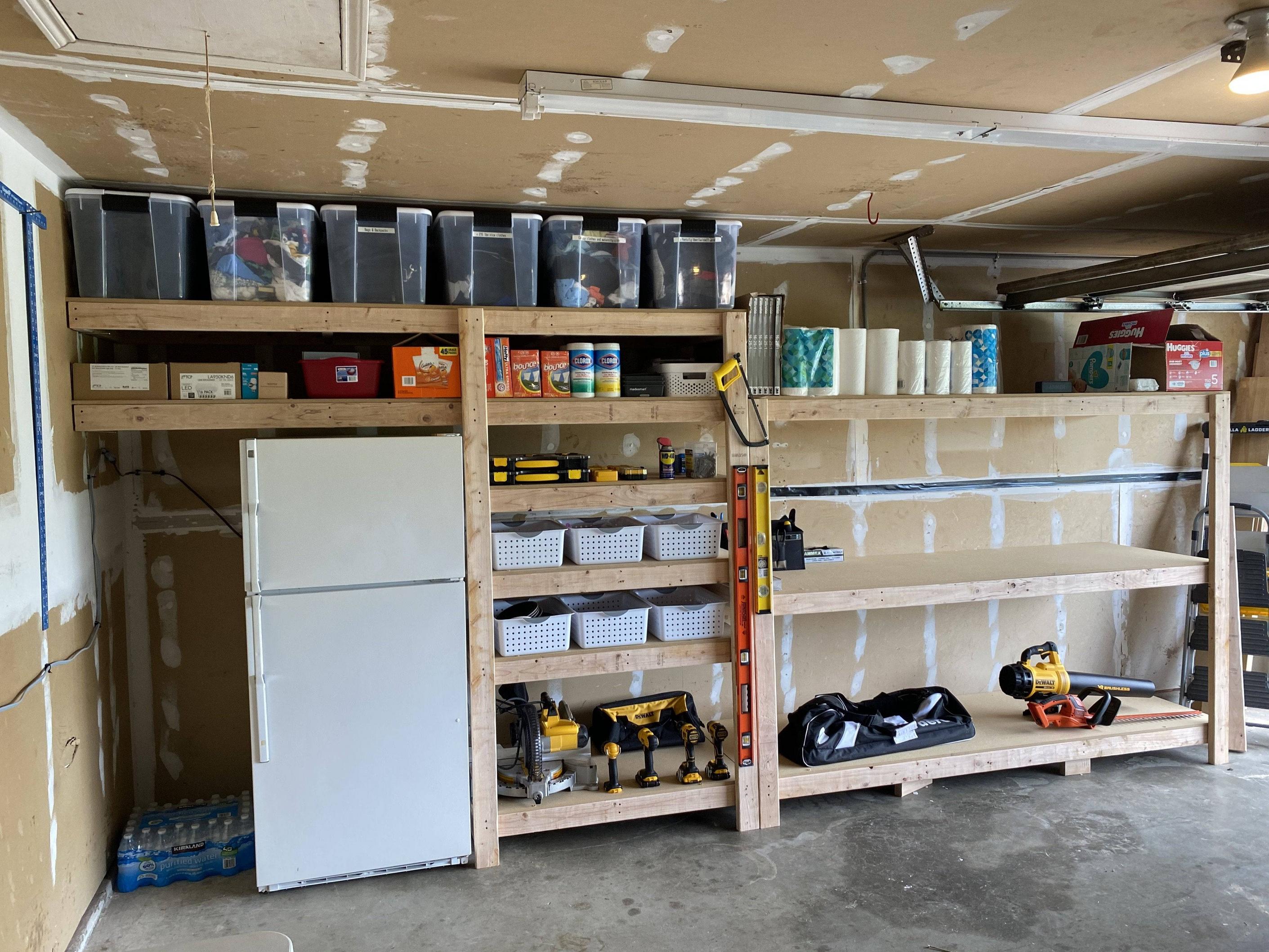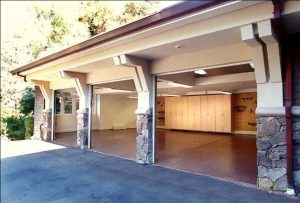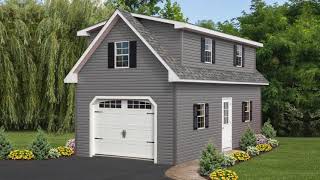
You can transform your garage without needing to build an extension. But you'll want to consider your options before committing to the project.
Convert your front of house
Garage conversions often involve removing a wall that connects the house to the garage, which can impact how your property looks from the street. Hire an architect to help you decide how to blend your new space with the rest.
You can create a sunroom or porch by using the space in your garage. You can enjoy the outdoors and increase the value of your house.
You can also make the most of the outdoor space surrounding your converted garage by adding a deck or fence. This will allow you and your family to enjoy the space outside your garage. It also ensures that your pets are safe.

A slim deck will increase the visual depth of your garage and prevent it from looking too big. This will help boost your home's curb appeal and will ensure that you can use it for entertaining, even when the weather is bad.
Convert your Garage into an ADU
Some homeowners choose to convert their garage into a fully functional ADU. If this is your plan, be sure to research your local zoning laws and regulations before you begin the process. This will help avoid any potential problems like building permits or limitations on the amount of cars you can park in the garage.
ADUs make great entertainment spaces, and can even be used as a bar. A bar made out of vehicle memorabilia, industrial fixtures and other items gives the space a quirky feel that also pays homage its garage roots.
Losada Garcia Architects' design is a fantastic example of how you can transform your garage into something useful. This design makes the space feel larger than it is because of the natural light and high ceilings.
Another design idea is to replace your garage door with a windowed wall, as seen in this project from Studio Losada Garcia. This will make the space feel larger and open to your garden.

You can save money on your winter heating bills by using internal insulation to keep your garage warm. This is done by lining the interior walls using insulation panelling or rockwool in between wooden stud walls and blockwork.
Spray foam or insulated plasterboard can be used to cover your entire garage's interior. This will reduce heat loss as well as prevent condensation.
FAQ
What is the difference between building a new home and gutting a current one?
Gutting a home involves removing everything within a building including walls and floors, ceilings as well as plumbing, electrical wiring, appliances, fixtures, and other fittings. This is usually done when you are moving into a new home and need to make some adjustments before you move in. It is often very costly to gut a home because of all the work involved. Depending on what job you do, the average cost for gutting a house is $10,000 to $20,000
Building a home is where a builder builds a house frame by frame, then adds walls, flooring, roofing, windows, doors, cabinets, countertops, bathrooms, etc. This is typically done after purchasing lots and lots of lands. Building a home usually costs less than gutting and can cost between $15,000 and $30,000.
When it comes down to it, it depends on what you want to do with the space. You will probably have to spend more to gut a house. You don't need to take everything apart or redo everything if you are building a home. Instead of waiting for someone to tear it down, you can make it exactly how you want.
Are there any savings on a remodel of a bathroom or kitchen.
Remodeling your bathroom or kitchen is expensive. But considering how much money you spend on energy bills each month, it might make more sense to invest in upgrading your home.
You could save thousands each year by making a small upgrade. A few easy changes like adding insulation to ceilings or walls can reduce heating/cooling costs by as much as 30%. Even a minor addition can increase comfort levels and increase the resale value.
It is crucial to consider durability and ease of maintenance when renovating. Materials like porcelain tile, solid wood flooring, and stainless-steel appliances will last longer and need fewer repairs than vinyl countertops.
You may also find that replacing old fixtures with newer models can help cut utility expenses. For example, installing low-flow showerheads and faucets can lower water usage by up to 50 percent. Replacing inefficient lighting with compact fluorescent bulbs can cut electricity consumption by up to 75 percent.
What is the cost of completely renovating a kitchen?
It's possible to wonder how much a home remodel would cost if you are thinking of starting one.
The average cost of a kitchen remodel between $10,000 and $15,000. However, there are ways to save money while improving your space's overall look and feel.
One way to reduce costs is to plan ahead of time. This includes choosing a style and color scheme that suits your lifestyle and finances.
Another way to cut costs is to make sure that you hire an experienced contractor. A skilled tradesman will know exactly what to do with each stage of the construction process. This means that he or she won’t waste time trying out different methods.
It's best to think about whether you want your current appliances to be replaced or kept. A kitchen remodel can add thousands to the cost by replacing appliances.
You might also consider buying used appliances over new ones. You will save money by purchasing used appliances.
It is possible to save money when you shop around for materials, fixtures, and other items. Many stores offer discounts on special occasions such as Cyber Monday and Black Friday.
Is $30000 enough for a kitchen remodel?
Depending on your budget, a kitchen renovation could cost you anywhere from $15000 to $35000. A complete kitchen remodel will cost you more than $20,000. However, if you want to update appliances, replace countertops, or add lighting and paint, you could do it for under $3000.
An average full-scale remodel costs $12,000 to $25,000 But there are ways to save money without compromising quality. One example of this is installing a sink, instead of replacing the old one. It costs about $1000. Or you can buy used appliances for half the price of new ones.
Kitchen renovations are more time-consuming than other types of projects. Plan accordingly. It doesn't make sense to start work on your kitchen when you realize half way through that time is running out.
It is best to start early. Begin to look at your options and get quotes from several contractors. Next, narrow your options based on price and availability.
Once you've found a few potential contractors, ask for estimates and compare prices. The best bid may not be the most affordable. It is important that you find someone with comparable work experience to provide an estimate.
Be sure to take into account all additional costs when you calculate the final cost. These might include extra labor costs, permit fees, etc. You should be realistic about what you can spend and stick to your spending budget.
Don't be afraid to tell the contractor what you think about any of the quotes. If you don't like the first quote, tell the contractor why and give him or her another chance. Saving money is not a matter of pride.
What is it worth to tile a bathroom?
If you want to do it yourself, go big. Full bathroom remodels are an investment. But when considering the long-term value of having a beautiful space for years to come, it makes sense to invest in quality materials and fixtures.
You can make a big impact on how your room looks. This guide will help you select the right tiles for your project, no matter how small or large.
The first step is to decide what type of flooring you would like to install. Common choices include ceramics and porcelain as well as stone and natural wooden. Next, choose a style such as a classic subway tile or a geometric pattern. Finally, pick a color palette.
You'll probably want to match the tile to the rest of the room for a large bathroom remodeling job. You might choose white subway tiles in the bathroom and kitchen, but use darker colors in other rooms.
Next, consider the size of your project. Is it time to update a small powder room? Would you prefer to add a walk in closet to your master bedroom?
After you have determined the scope of work, visit local shops to see samples. This will allow you to get a feel for how the product is assembled.
For great deals on porcelain tiles, you can shop online. Many retailers offer free shipping and discounts on bulk purchases.
What's the difference between a remodel or a renovation?
A remodel is major renovation to a room, or a portion of a rooms. A renovation is minor changes to a room, or a portion of a bedroom. For example, a bathroom remodeling project is considered a major one, while an upgrade to a sink faucet would be considered a minor job.
Remodeling entails the replacement of an entire room, or a portion thereof. Renovating a room is simply changing one aspect of it. For example, a kitchen remodel involves replacing counters, sinks, appliances, lighting, paint colors, and other accessories. However, a kitchen renovation could include changing the color of the wall or installing a light fixture.
Statistics
- Following the effects of COVID-19, homeowners spent 48% less on their renovation costs than before the pandemic 1 2 (rocketmortgage.com)
- Windows 3 – 4% Patio or backyard 2 – 5% (rocketmortgage.com)
- 55%Universal average cost: $38,813Additional home value: $22,475Return on investment: 58%Mid-range average cost: $24,424Additional home value: $14,671Return on investment: (rocketmortgage.com)
- About 33 percent of people report renovating their primary bedroom to increase livability and overall function. (rocketmortgage.com)
- Attic or basement 10 – 15% (rocketmortgage.com)
External Links
How To
How to Install Porch Flooring
While installing porch flooring is straightforward, it takes some planning. The easiest way to install porch flooring is by laying a concrete slab before installing the porch flooring. You can also lay a plywood deckboard if you don't have access to concrete slabs. This allows you to install your porch flooring without spending a lot of money on a concrete slab.
When installing porch flooring, the first step is to secure the plywood subfloor. You will need to measure the porch's width and cut two strips of plywood equal to it. These should be laid along the porch's sides. Then nail them in place and attach to the walls.
After attaching the subfloor to the surface, prepare the area where the porch flooring will be installed. This usually involves cutting the floorboards' top layer to the required size. Finish the porch flooring by applying a finish. A common finish is a polyurethane. It is possible to stain porch flooring. Staining is easier than applying a clear coat because you only need to sand the stained areas after applying the final coat of paint.
These tasks are completed and you can install the porch flooring. Next, mark the spot for your porch flooring. Next, measure the porch flooring and cut it to size. Next, place the porch flooring and attach it with nails.
You can install porch stairs if you want to add more stability to your porch flooring. Like porch flooring, porch stairs are typically made from hardwood. Some people prefer to add their porch stairs before installing their porch flooring.
After you've installed the porch flooring, it's time for you to complete your project. You first have to take out the old porch flooring and put in a new one. Next, remove any debris. Remember to take care of the dust and dirt around your home.